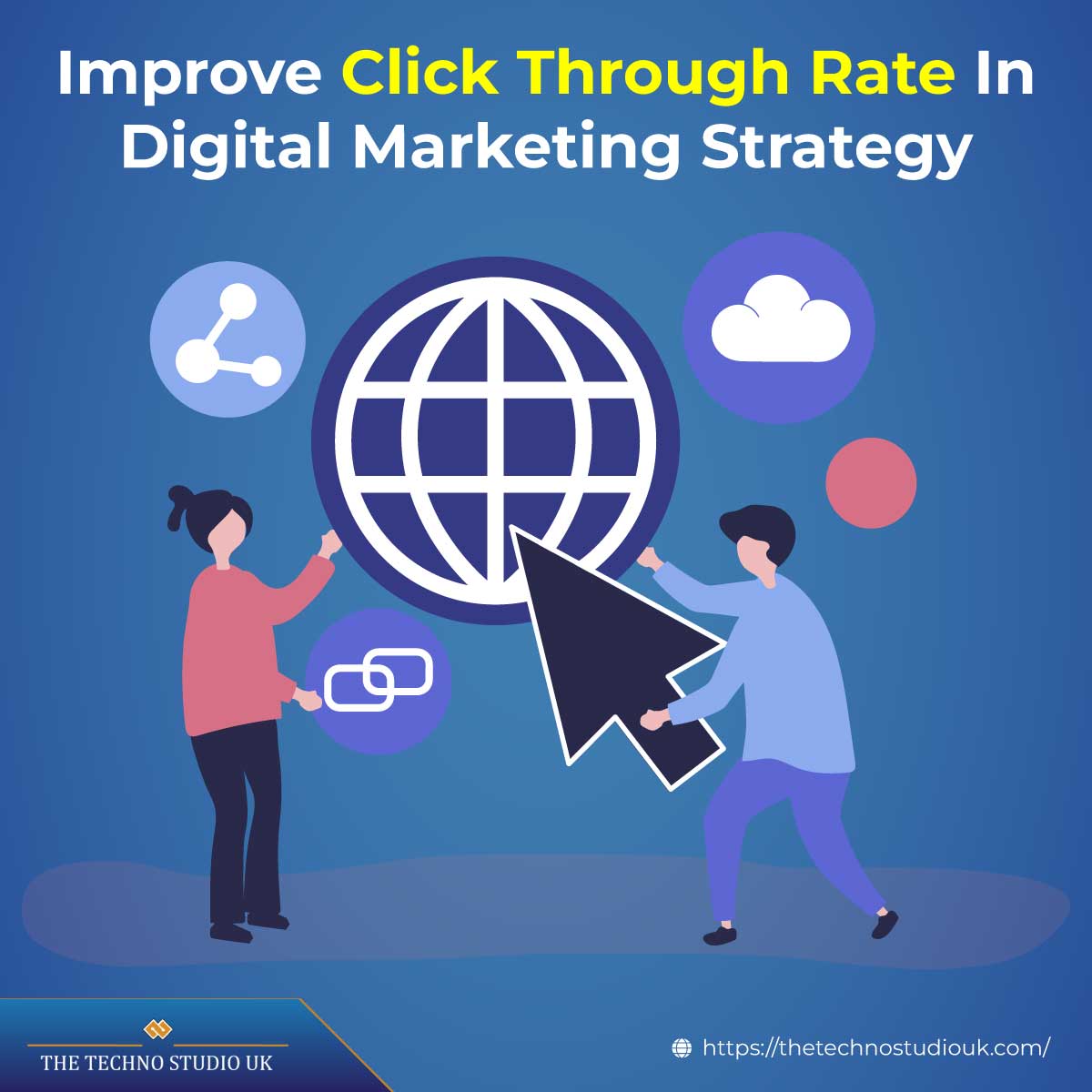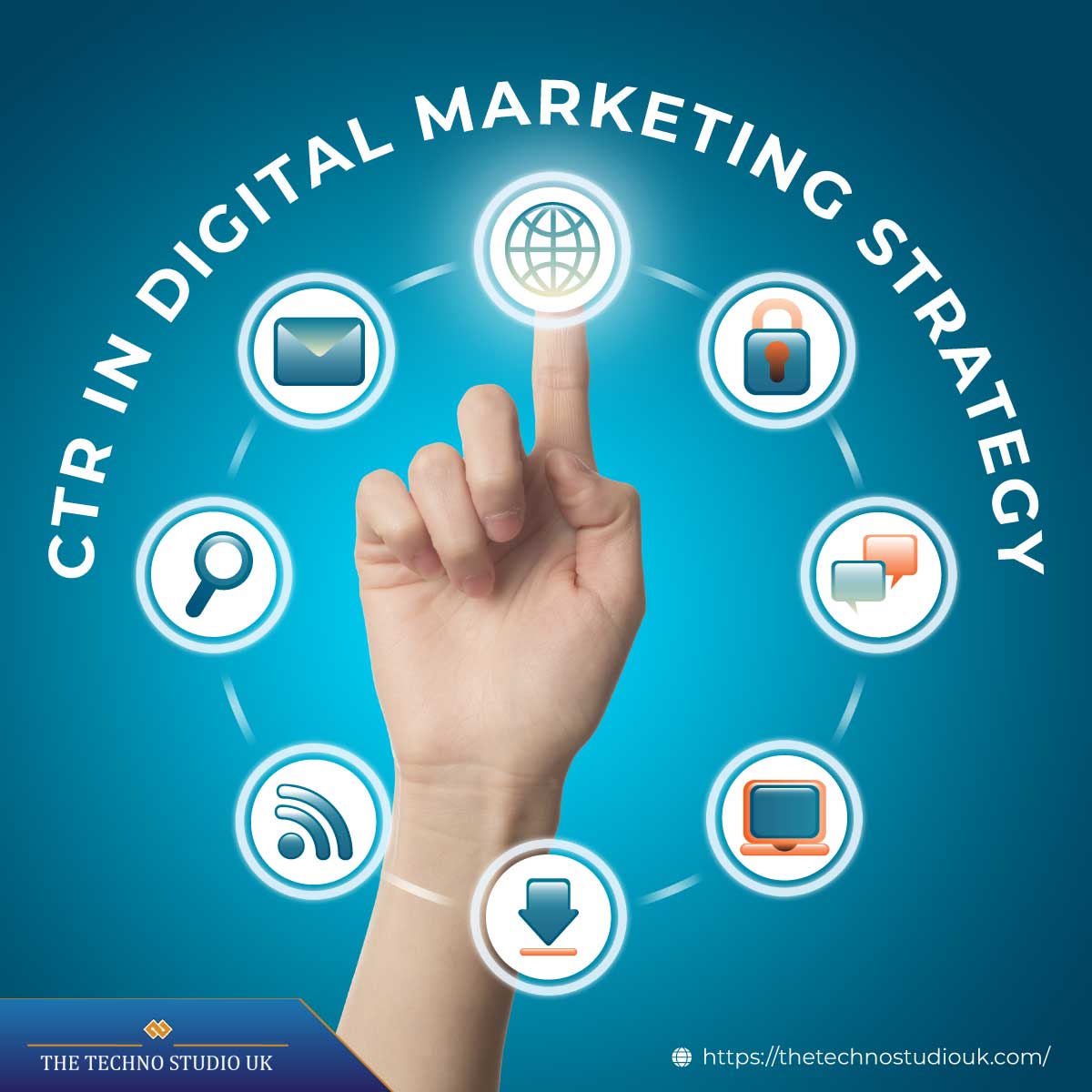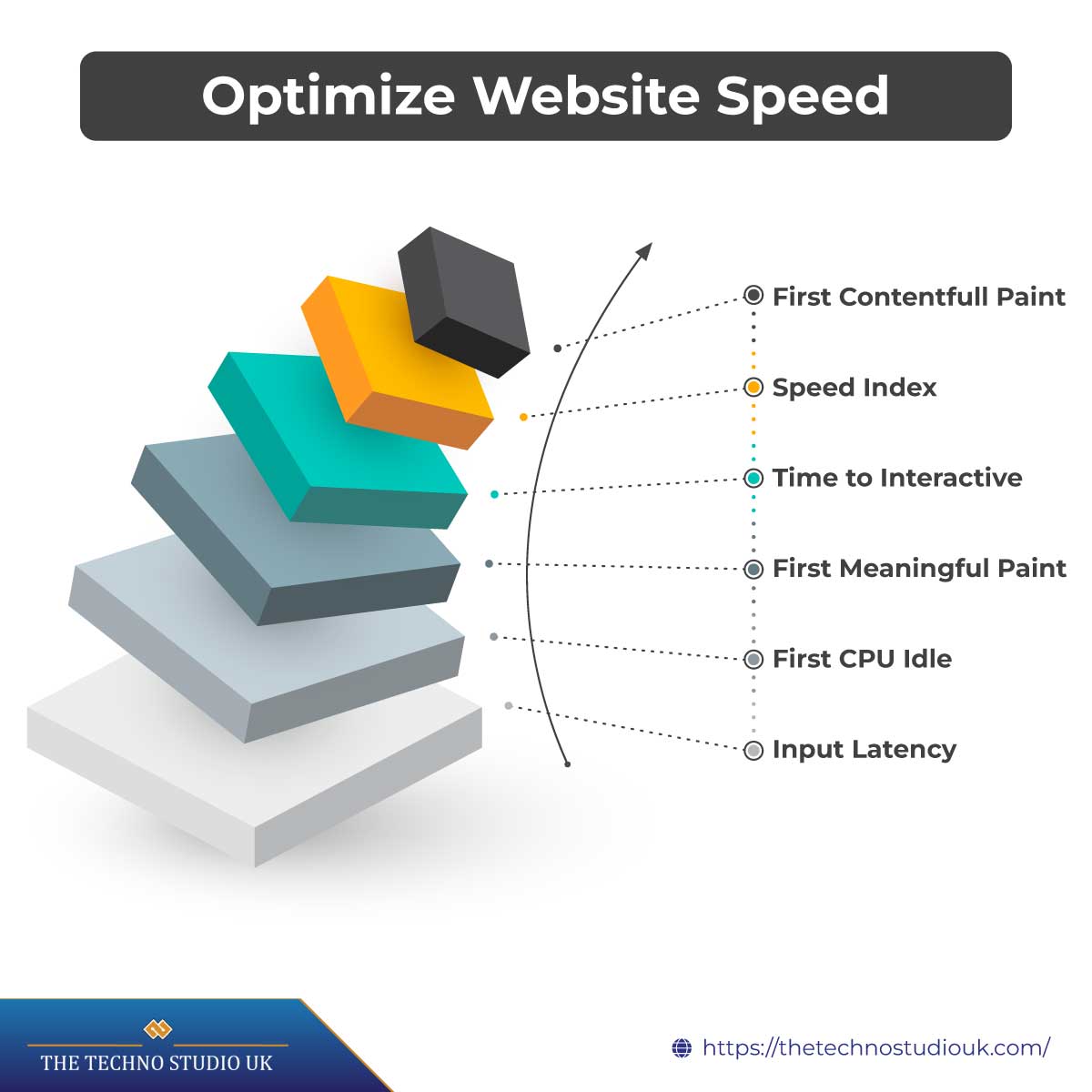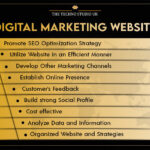10 Methods To Enhance Click Through Rate In Digital Marketing Strategy
Home - Blog - Digital Marketing - 10 Methods To Enhance Click Through Rate In Digital Marketing Strategy
CTR In digital marketing: The percentage of individuals who click on a link is called the Click Through Rate.. How often a link clicks by the people who saw it is known as the CTR. We calculate the CTR by dividing the total number of impressions by the number of clicks. Your Click-through Rate will be 5% if you get five clicks out of 100 ad impressions.
To measure the effectiveness of digital marketing services and campaigns, CTR is a widely-accepted metric applicable across a wide range of mediums such as display and search as well as via social media and email. It measures both performance and, maybe more crucially, motivation. An easy way to evaluate the performance of many channels, campaigns, advertisements and emails are to use this strategy.

The “clickthrough rate” is essential in search engine marketing. AdWords and organic SEO results enhance by using only three techniques:
- More people will see your ad or snippet as a result
- Adverts and snippets that get more people to click on them are more likely to succeed.
- Aim to increase the number of individuals who become customers (or convert) after viewing your landing page.
Alternatively, search engine marketing is a “restricted method of operation.” One such limitation is the CTR. Your Click through Rate heavily influences your AdWords quality score. If you want to maintain your SEO position, it will affect your clickthrough rate.
CTR In Digital Marketing Strategy
Measuring performance based on CTR in digital marketing is more appropriate than just counting the number of clicks. For campaigns with different quantities of impressions, evaluating them only based on the number of clicks received is unfair. As more people see your ad, the likelihood is that you’ll get more clicks. Using the Clickthrough Rate, you may compare the results of several campaigns assuming they all received the same number of impressions.
While a high clickthrough rate shows a high level of engagement, it also signals something else. When users click through to your content, they are interested enough in what you have to say to do more than engage with it. Major platforms are scrambling to protect users from departing with this new policy.

A high CTR also suggests a high level of trustworthiness. A person will be far more likely to click on something they find interesting if they are confident there will be no unpleasant surprises waiting for them on the other side. Each click is a great first step toward creating trust since internet users are far more likely to purchase from a site they trust. Like any other rate measure, CTR in digital marketing helps us in three ways:
- The percentage of those who have previously clicked.
- Use Click through rate and daily impressions to estimate how long it will take to get a desired number of clicks.
- This website or advertisement will pique the interest of anyone who sees it.
Value OF CTR
In addition to showing how relevant your ad, content, and websites are to searchers, CTR determines both organic and sponsored search rankings.

Your clickthrough rate has a significant impact on the success of your online business. It will affect people who visit, click, and engage with your website. The ranking algorithm used by Google determines where your ad or website appears in search results.
Search: An impression occurs when one of your links shows on a search engine’s results page.
There are two forms of CTR for search results pages:
- Site CTR
- Page CTR
Site CTR: A site’s CTR (clickthrough rate) is the percentage of people who click on a result from the same website in search results or queries.
Page CTR: The ratio of clicks to impressions for a particular search result is known as the page CTR.
There are impressions every time your search ad appears in the search results. The number of impressions divided by the number of clicks is all required. Because there is just one search ad on each page, there is no second CTR for search advertising.
Display: Display advertisements are counted as impressions when they are loaded. It is determined by the number of page visits divided by ad clicks. By dividing the number of clicks by the number of ad impressions, one may get an ad’s CTR. Ad networks commonly report a “Page CTR” since a page may have many ads.
- The Click through rate for video advertisements is divided by the number of click
- Throughs and the number of video views. Some video ads feature clicks events that allow you to change the video’s playback speed.
Social: Organic social media: impression measurement differs greatly due to the social media platform. When a tweet is loaded (even off-screen), Twitter considers it an impression, but LinkedIn only counts it as an impression if the post is at least 50% on-screen for 300 milliseconds.
Once again, social media advertising is simple: if an ad loads, it is counted as an impression on the platform. Click-through rates are divided by impressions to compute social media ad CTR.
Email: CTOR is more widely used than CTR as an email measure. When it comes to email, the CTR is computed by dividing the number of delivered emails by the number of clicks.
Content: To utilize CTR, divide clicks by page views, a statistic seldom used for blog entries. It is possible to accomplish this for a single link or all outbound connections.
There are two types of clickthrough rates.
High CTR: The higher the CTR, the more likely your ad or website is attractive and relevant to your target audience. With branded keywords, a CTR of more than ten percent is feasible. Non-branded keywords with a clickthrough rate of less than 1% are rare in some cases.
Low CTR: The lower your clickthrough rate, the more likely your ad or webpage isn’t compelling enough for the user to click through. This might be due to a lack of imagination or ineffective targeting.
How Is Ad Rank Affected By CTR
It’s not only a way to gauge how well your ads reach potential customers by measuring their clickthrough rate. Your CTR also influences search engine rankings. If your ad ranks well, it will appear higher on the search results page. Award is given to the advertiser with the highest Ad Rank. Ad Rank also takes CTR into account heavily. Ad Rank, on the other hand, is a little more advanced.
New Google Ads with low clickthrough rates may appear lower on the page if you’ve previously had a lot of ads with low clickthrough rates. Low ad ranks might result from low CTR, regardless of how much you paid. The more you know about your ad’s CTR, the more you can improve it.
Aiming for a higher CTR is always a good idea, even if you’re not just doing it for the clicks. Getting plenty of traffic is pointless but not converting it into customers. We’re not in the business of enticing people to click on our content. Your CTR will rise as a result of the new tactics you learn.
Write Enticing Meta Descriptions
Another clever way to improve your organic CTR is to write well-crafted Meta descriptions. These snippets appear underneath your title tag on search engine results pages. People are more likely to browse the remainder of a website if they know what it’s about from the Meta description alone.
Let readers know you’re writing about something they’re interested in learning. Your key phrases will be useful once again, so keep them handy. Meta descriptions improve in a variety of ways, including:
- The Meta description is an excellent place to offer answers to queries from your customers. Only 160 characters are allowed in a Meta description.
- Be detailed and relevant:
- To improve your clickthrough rate, utilize strong language to elicit strong responses from your readers, such as emotionally charged phrases.
Use Images In Your Posts
Image SEO recommends utilizing alt text and accurately identifying your images. It’s quite common to add images in your posts, as long as they aren’t excessive. Including graphics in your post is a terrific way to boost readership and interaction. They are required if you want your content to appear in the featured snippets and other SERP info boxes. Users are also more likely to click on your URL while checking for search results in the photo section.
Use Descriptive URLs
The URL of your website is one of the most significant pieces of information displayed in SERPs. To improve your organic CTR, you’ll need to change it. One way to achieve this is to make it as thorough as possible. Use your term in your URL in a way that seems natural. Using this method, you’ll be able to demonstrate to your audience that your content is relevant.
Make your URL as brief as feasible as another piece of advice for optimizing it. A more visually appealing and easier-to-read design is the result. As a result, there will be an improve in the number of people clicking on it. If you’re a WordPress user, you may make the change in your permalink settings.
Simplify Your Title Format
If your title tag isn’t properly formed, it will appear in the search results. Keeping things simple is the quickest and most effective approach to achieving this goal. It’s important to keep in mind that most people use search engines to find the most relevant results. The more clicks you get, the more people will read your material, so make your headline as obvious as possible.
Using your company or personal brand name in your title tag may also help you improve your organic clickthrough rates. Take care of it!
- Never begin a title with “I,” “my,” or “us.” Previously, I used to do this, but it lowered my rating.
- The title is cut off in the screenshot above, although the issue was already covered. Make sure your title is clear:
Investigate search engine results pages (SERPs) using software like Avid Demand.
Localize Your Content
Mobile has rapidly eclipsed the desktop as a source of internet traffic. Most smartphones have their location services enabled, allowing Google to read the user’s location and provide relevant results based on their location. SMBs that exclusively operate in a certain area or businesses that provide in-person services benefit from localized content.
Improve your organic CTR by localizing your content. Most mobile users prefer local content. Localized content can help you reach customers with high intent who are already looking for what you have to offer on the internet.
One way to localize your content is to include your location in your content, meta description, and title tag. In addition, you may want to set up a Google My Business account for your organization (GMB). As a result, your name will be known far and wide. Your location and other firm information will appear alongside your competitors in the search results when customers perform local searches.
Ensure you’re providing relevant and helpful content to acquire more clicks. It doesn’t get much more beneficial for local searches than including your location in your profile information.
Use The Listicle Format
There is a lot of interest in lists at the moment. Including them in your content strategy may boost your organic clickthrough rates. If you want to do this, make sure to include numbers in both your headline and tag. Consumers can see that a simple listicle is behind the click. The least amount of mental effort is required to consume a listicle.
Increased inclusion in highlighted snippets is another benefit of using listicles to boost organic CTR. Listicles are a great way to boost organic clickthrough rates. With the SERP’s knowledge of what kind of content is most useful to its visitors comes the certainty that listicles will boost your organic CTR.
Optimize Website Speed
With Google preferring Page Experience and Core Web Vitals as ranking elements, site speed is more important than ever. If your website isn’t optimized for speed, people may click on your link and instantly depart, hurting your organic CTR. A 32% increase in bounce rates on mobile devices may be attributed to a site speed increase from one to three seconds.

Search for your URL in the search area and click “Search” to check how quick your website is. Then, on the sidebar’s left, select “Site audit.” For both mobile and desktop, “Site Speed” shows the loading time. Besides loading time, it also checks for the following:
- First Content-full Paint
- Speed Index
- Time to Interactive
- First Meaningful Paint
- First CPU Idle
- Input Latency
Conclusion
By tracking your organic CTR, you can see how well your digital marketing campaigns are doing. Many people come in to see what you have to offer, and they’re not paying for it at all. It would be helpful if you thus focused on improving your content’s SEO. Increasing CTR in digital marketing is no longer a problem for websites and business owners because there are many options. Furthermore, the results speak for themselves and are worth the effort.
Adnan Settler
Social Share Links:
Recent Posts
- 10 Ways Online Marketing Increases Customer Engagement

- Relationship Between Digital Marketing And Sales

- Why Choose A Digital Marketing Agency

- 10 Reasons Internet Marketing Services Increase Revenue

- 15 Tips To Hire Social Media Marketing Companies

- Marketing Mix: 10 Benefits Model for Business Success

- Grow Business With Online Marketing Agency

- Worth To Hire A Digital Marketing Agency In UK

- Best Reasons To Invest in Website and Digital Marketing Strategy

- 8 Steps to Choosing the Right Digital Marketing Agency

Subscribe and up to date for new blog’s









